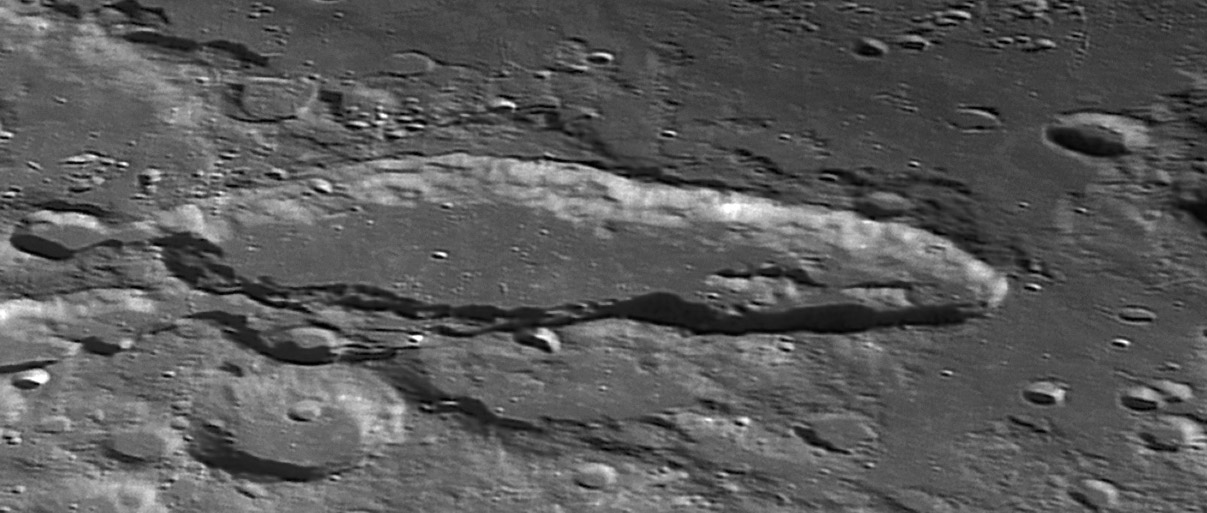
image by Paolo R. Lazzarotti
What can we say about Schiller? It is probably the most uncircular crater on the Moon (179 x 71 km) and it is fairly old. Its elongated shape has long sparked controversy. Is Schiller a strange volcanic collapse crater - a caldera such as 100 km long Toba in Indonesia? Or a chance overlapping of two or three impact craters? If Schiller were a caldera it should be surrounded by vast amounts of ash for thousands of kilometers, but there is no evidence for it. If multiple chance impacts formed it, what is the strange linear central ridge on the right side of the feature? The best interpretation is that Schiller resulted from an oblique impact, similar to how Messier and Messier A were formed. The Messier pair formed from an impact that was so very oblique that the projectile ricocheted making two discrete (and odd) pits. But the Schiller impact was not so oblique, and it looks like the projectile broke into pieces that impacted one right after the other. The linear peak might represent how a central peak would rebound if there were a strong horizontal component of impact as well as a vertical one.
Technical Details:
10 April 2006, Gladio 315 Lazzarotti telescope (f/25), Lumenera Infinity 2-1M camera, Edmund Optics G filter IR blocked, 468 frames stack out of 2000. This is just a piece of a larger image.
Related Links:
Rükl plate 71
Paolo’s website
Yesterday's LPOD: Euclides Region
Tomorrow's LPOD: Three Rilles and a Strange Volcano
COMMENTS?
Register, Log in, and join in the comments.



